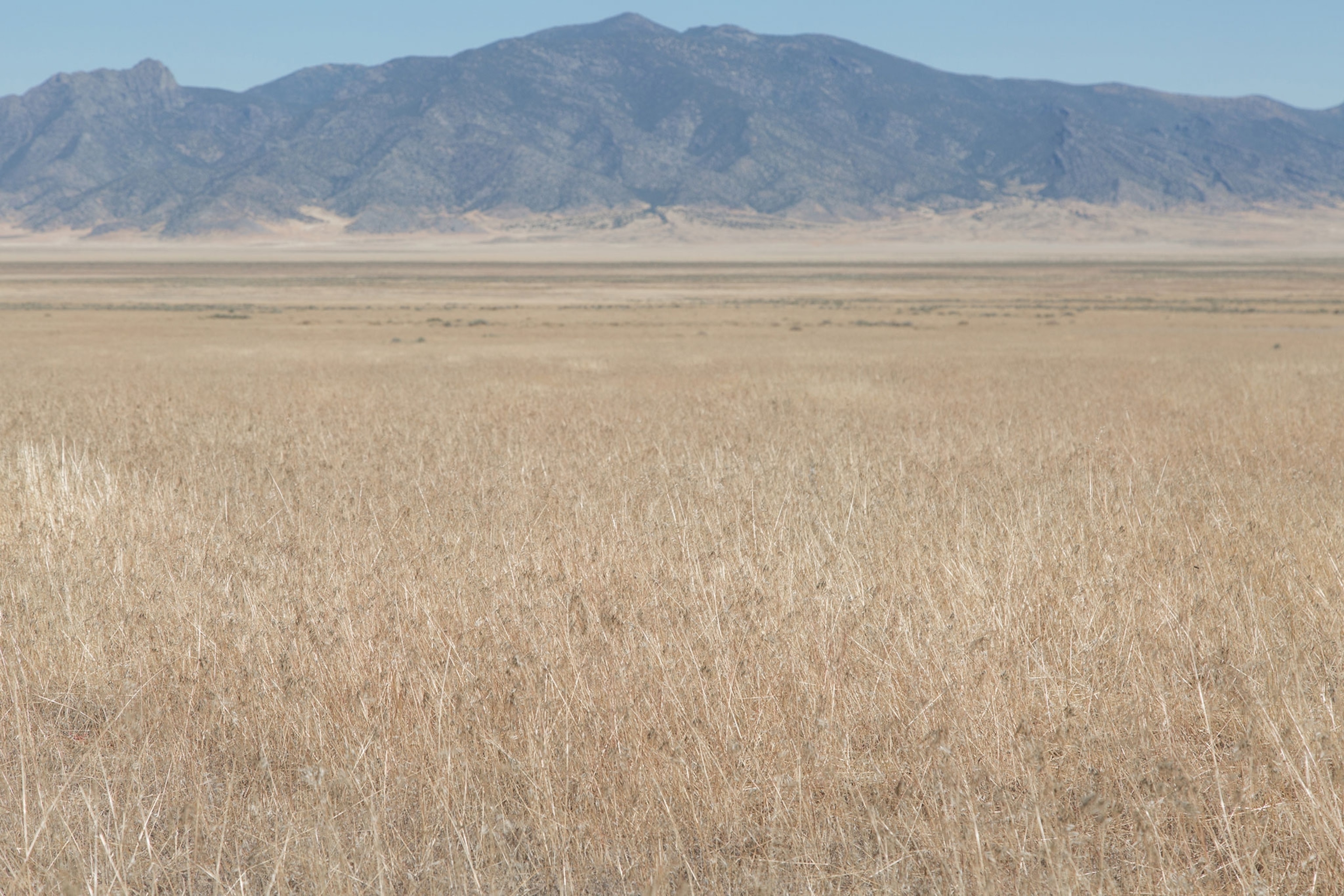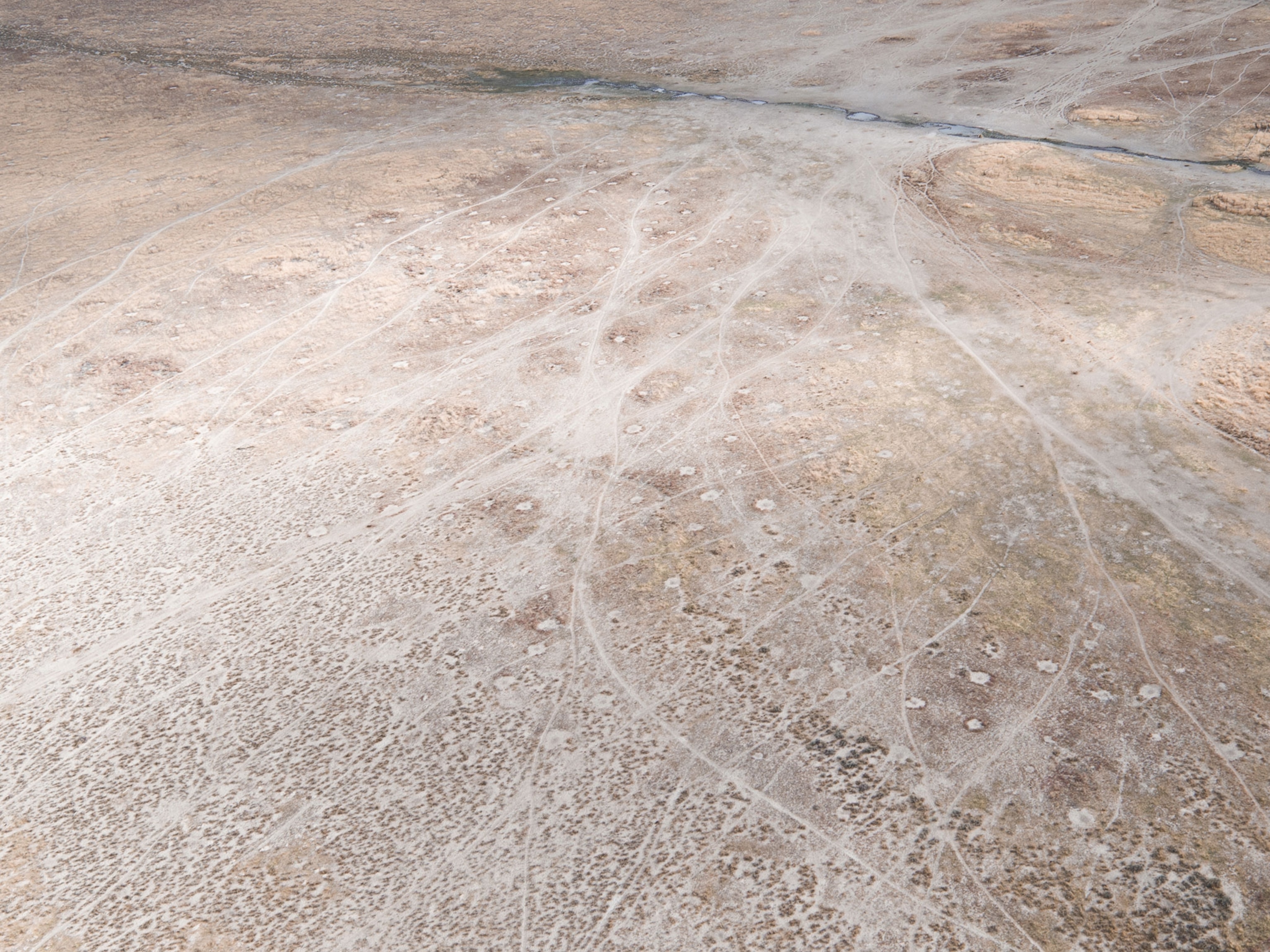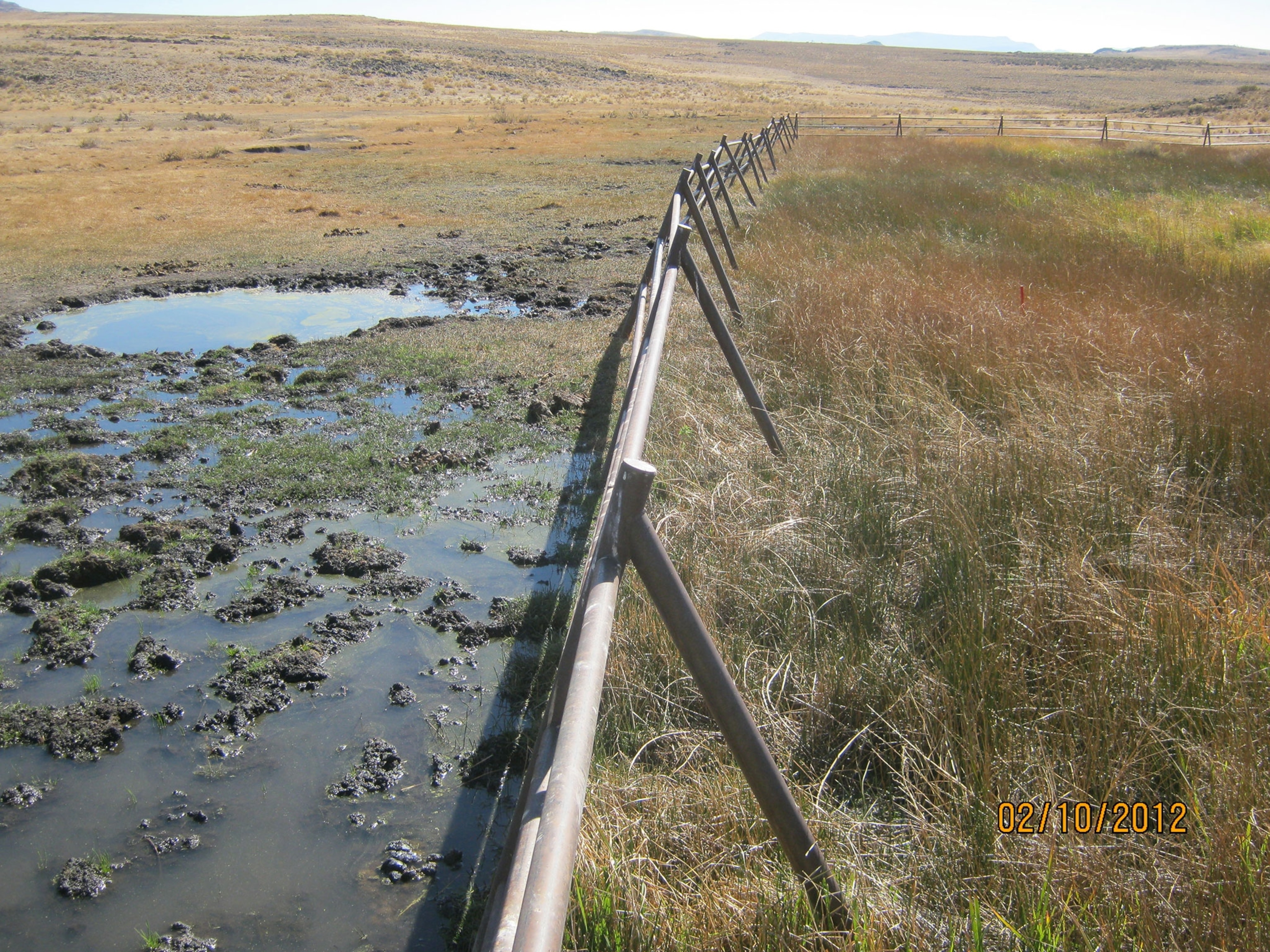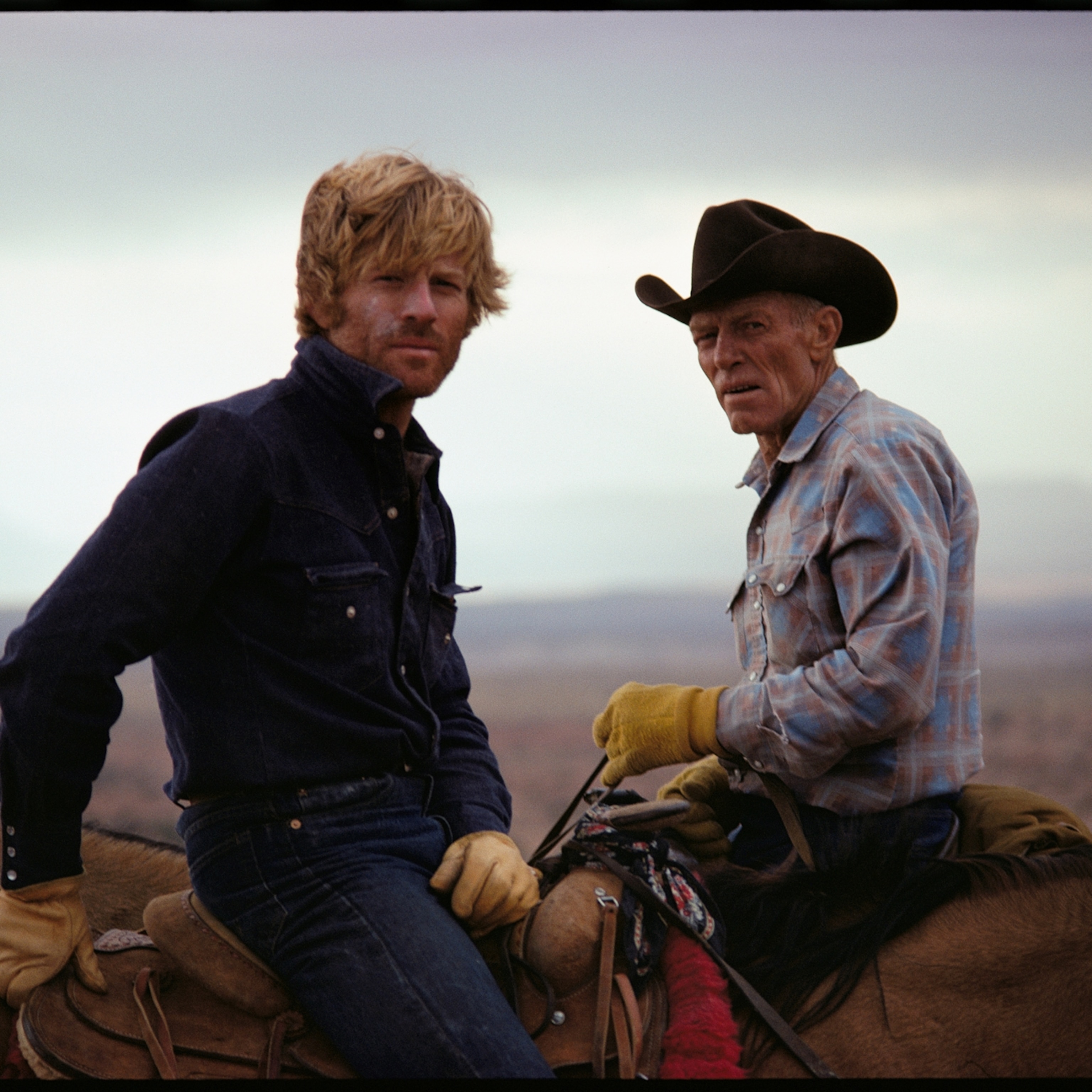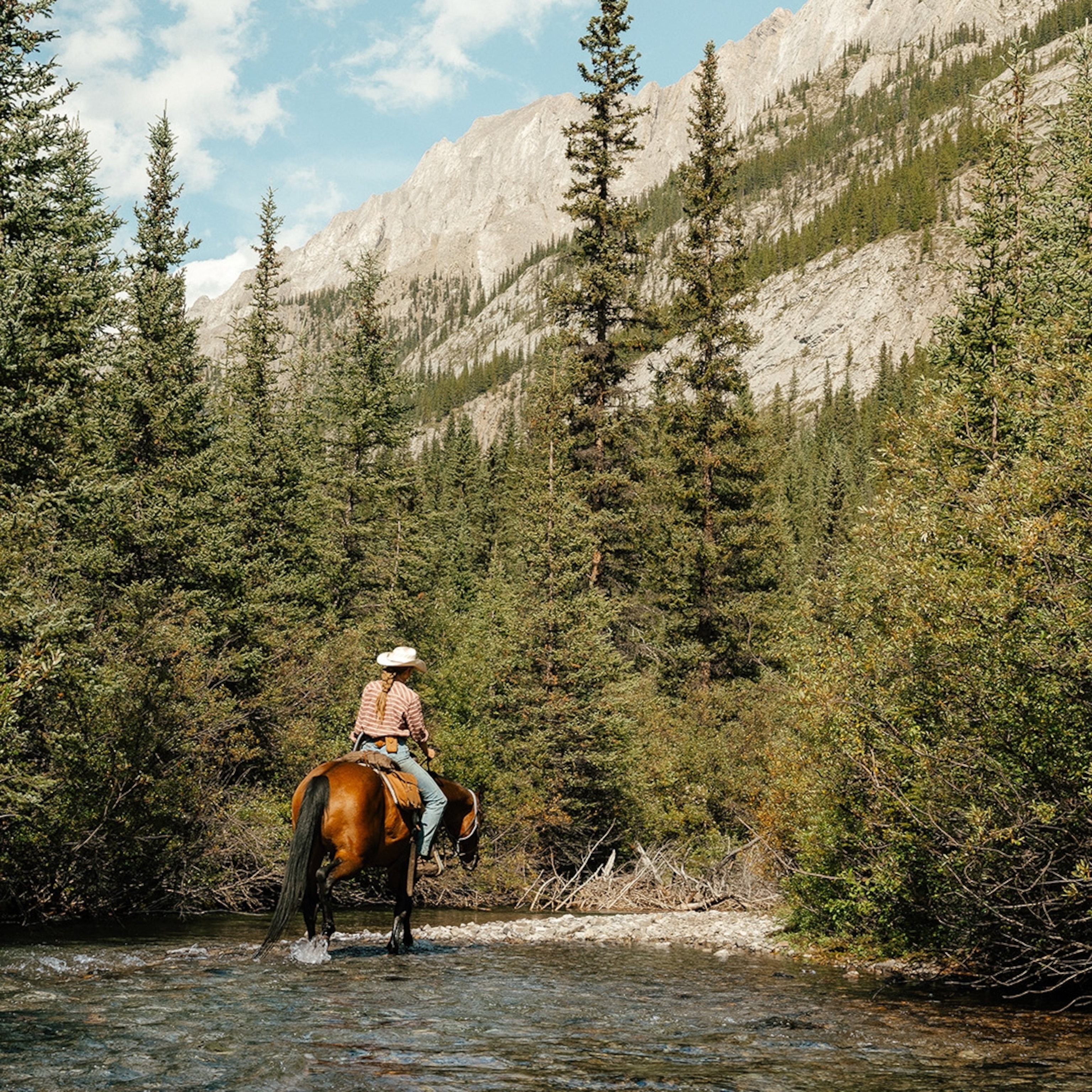Wild Horses: The Consequences of Doing Nothing
Failing to manage wild herds in Western states, experts say, could have devastating effects on rangelands—and all of the animals that depend on them.
The ecological consequences of poor grazing management in the desert ecosystems of the American West’s Great Basin can be severe. To find out how severe, I met Dr. Barry Perryman, rangeland ecology professor at the University of Nevada, at a dry water well near the 230,000-acre Fish Creek Complex Herd Management Area on public lands managed overseen by the Bureau of Land Management near Eureka, Nevada.
About 50 wild horses greeted us and stood around the well, waiting for BLM staff to fill it up because there isn’t enough naturally occurring water to keep the horses alive. The BLM’s Appropriate Management Level—the population of horses for a thriving natural ecological balance—here is between 101 and 170 horses, but the current population is nearing 500, pretty standard overpopulation rate for Nevada wild horse herds. Statewide, the appropriate management level is 12,800, but the current population is estimated to be more than 34,000.
I had questions for Perryman about the landscape, threats to the local ecosystems, and the possibly fate of the wild horses that call the rangeland home.
Ben Masters: What did this land look like before European settlement, livestock grazing, and the introduction of exotic plants?
Barry Perryman: How far back do you want to go? What is pristine and what is natural? Lots of people want to replicate the land to what it looked like when Lewis and Clark came out here in 1804, but that was at the tail end of a 300-year mini ice age, and no matter what we do, we can’t replicate that. But why 1804? Why don’t we go back thousands of years to the altithermal period, a 3,000-year-long drought that would’ve made this landscape now look like a rainforest? We can’t replicate the past. We’ve put fences on highways, developed infrastructure, introduced exotic plants, and forever changed the ecology of these landscapes. What we can do is plan for the future and manage the land using the best available science to provide habitat, conserve biodiversity, and control exotic plants that we’ve introduced.
A lot of wildlife biologists, ecologists, and conservation organizations blame wild horses for rangeland damage. Why?
Wild horses aren’t at fault. Wild horses are here making a living like every other animal. The fault lies in management. Up until the Taylor Grazing Act was passed in 1934, this area was a grazing free-for-all for anyone with the courage to come out here and bring livestock. It’s undeniable that historic unregulated livestock grazing contributed to erosion and overgrazing, and we still occasionally see some of those legacy effects today. The science of rangeland ecology hadn’t come along yet and the ranching industry didn’t understand the dynamics of the ecosystems they were using. Public land ranching today is highly regulated. But any population of unmanaged large herbivores in an area, even if it’s a million acres, without predators can ultimately cause vegetation damage, whether its deer, elk, cows, sheep, horses, or bison.”
What exactly is overgrazing?
“Grazing isn’t a noun. Grazing is a verb made up of three components: timing, duration, and intensity. Timing is what time of year the grazing occurs. Duration is the amount of time the grazing occurs, and intensity is the amount of animals doing the grazing. There are three main grazing categories that we manage: big game such as elk, deer, and pronghorn; wild horses and burros, and livestock. We can’t do much about timing and duration of big game animals; they’re out there year long and can go anywhere they want. But the intensity, the population size of the big game animals, is managed through predators such as coyotes and mountain lions or through culls and permitted hunting licenses.
All three components of grazing are managed for livestock, mainly cattle and sheep. The BLM tells the rancher how many cattle he or she can graze, how long they can graze, and what time of year they can graze. Wild horses and burros are more similar to big game animals in management except they have limited predators and no hunting permits to manage the grazing intensity or population size. Instead they are rounded up by the BLM. But now that the BLM has stopped conducting enough roundups because they’re spending all their budget warehousing unwanted horses, they’ve allowed wild horses and burros in some areas to become three times, five times, or even 10 times more than the appropriate management level.
This creates a massive problem for the rangeland because the horses are putting unmanaged pressure on forage all day, every day, for the entire year. Eventually, that landscape reaches a threshold where native high-forage-value plants lose the ability to compete with unpalatable, undesirable, or nonnative species. Those undesirable species could then take over a landscape. In the case of cheatgrass, that has the consequence of creating an unnatural fire cycle than can forever change the ecology of the land. The problem isn’t the wild horses; the problem is the inability for the BLM to manage the wild horses at a population size the landscape can healthily sustain.
What is cheatgrass, and how bad can it get?
Cheatgrass is an Asiatic, introduced annual grass that has taken over about 50 million acres of the American West. It is found on about 100 million acres. The problem with cheatgrass is that it’s unpalatable for much of the year and it changes the fire regime. Instead of fires occurring every 100-plus years, cheatgrass can increase the fire regime to every three to seven years, which doesn’t allow enough time for many of the important brushy species to grow back. The more fires there are, the more prevalent the cheatgrass becomes.
As for how bad it can get? I call it the cinder bowl—a play on words of the Dust Bowl that occurred in the 1930s. If we don’t change our management practices to tackle this problem and we continue to lose acreage to cheatgrass monocultures, we could experience fires that are millions of acres, even tens of millions of acres, in size, every single year in the Great Basin. This would affect air quality in Salt Lake City, Reno, Boise and other communities, drastically reduce forage availability, and be the potential nail in the coffin for some local populations of endangered or threatened species.
But this doesn’t have to happen. We have in our management arsenal the tools to manage cheatgrass and conserve native plant communities and the wildlife that depend on them. Lots of people think of the wild horse and burro issue as a political one, as a battle between ranchers and wild horses, and we need to start considering the ecological consequences of continuing to allow unmanaged, exponential growth of wild horses.
What does your crystal ball predict for the wild horses and burros in Nevada?
It’s not pretty. I think there will be an implosion. We have dysfunctionality in the box; we can make the box bigger by taking away more land and forage from wildlife and livestock, but then we would just have more dysfunctionality in an even bigger box. This would buy us time, but eventually we’ll have to make a hard decision or the hard decision will be made for us. If we continue down this path of unregulated breeding and mismanagement, the BLM’s wild horse populations will continue to expand to, say, 100,000, 120,000, or 150,000, maybe more, depending on how many good precipitation years we have.
But eventually a bad winter or extended drought will occur. When that happens, natural regulation will take place. Wild horses and burros could begin starving by the tens of thousands along with the mule deer, elk, pronghorn, and other native wildlife. During the process, all available forage will be under extreme grazing pressure and the ecology of the landscape could be damaged for generations. When the public sees the horses starving to death, there will be an outcry for the BLM to gather them to save their lives. The horses will then be warehoused for the rest of their lives and saved.
But what about the rangeland and everything that depends on it? How is it fair to the reptiles, songbirds, small mammals, pronghorn, and future generations of people to inherit a degraded rangeland that we could have prevented?
How do you define good land management?
That is an interesting question. It has to do with the future. What do we want in the future? What do we want to leave, in terms of legacy, to future generations of humans, landscapes, and wildlife? To me it boils down to resilience. If we have resilient landscapes, with lots of biodiversity in the wildlife and vegetation structure, then they will be able to persevere through whatever changes may occur, whether that will be climate changes, drought cycles, wet cycles, fire, war, you name it. The land will be able to face those things. The more resilient our landscapes are, the better off they, and we, will be in the future.
Searching for Solutions
Perryman’s bleak prediction is already a reality in some areas. During the summer of 2015, public outcry over starving horses in the Cold Creek Area of the Wheeler Pass Herd Management Area just west of Las Vegas, Nevada, pressured the BLM to act. The photos were hard to look at: starving foals suckling from mothers who were just skin and bone; horses with their ribs and hips protruding, too weak to be rounded up. Forage conditions were so dire the horses were eating spiny Joshua trees. The Appropriate Management Level for the herd management area is 47 to 66 wild horses and 20 to 35 burros, but the estimated population was about 400 horses and 150 burros. The BLM conducted an emergency roundup of more than 200 animals, and vets made the decision to euthanize 30 desperately weak individuals. The gathered horses were put up for adoption, and some will likely live in a holding facility for the rest of their lives along with 45,000 other wild horses already locked up.
- National Geographic Expeditions
There isn’t a lot of agreement between different interest groups regarding public lands grazing and the wild horse and burro issue. Wild horse activists often claim “welfare ranchers” have caused tremendous ecological damage, shouldn’t receive government subsidies, that wild horses should receive forage priority on public lands, and that public lands ranchers are costing taxpayers a huge amount of money. Proponents of public land ranching claim that managed grazing is an efficient way to eradicate invasive plants, feeds humans, and stimulates rural economies. And, they argue that public land ranching preserves the livelihoods of cowboys, which are often dependent on public lands and equally or more important than conserving the wild horses.
Meanwhile, many wildlife organizations question why livestock are at the center of a public lands grazing battle when native animals like bison, bighorn sheep, elk, pronghorn, mule deer, wolves, and grizzlies still have lots of room to expand to their historic ranges since being nearly eliminated a century ago.
Nationwide, the BLM currently authorizes 8.6 million animal unit monthlys (AUMs) to ranchers to graze livestock on 150 million acres of BLM public lands. This is fewer than half of the 18 million AUMs issued in the 1950s. In comparison, there are approximately 75,000 wild horses, three times the Appropriate Management Level, effectively utilizing 900,000 AUMs on the 31.2 million acres designated for wild horses.
In 2013, the most recent year I could acquire forage allocation data, the BLM gave out nearly 1.1 million livestock AUMs to ranchers in the Herd Management Areas that were shared with wild horses. Since then, some of those livestock AUMs were decreased due to lack of forage, resulting in the nationwide ratio of wild horse AUMs to livestock AUMs to be about 1:1. This ratio can and does change due to rescinded cattle and livestock permits during drought, rising horse populations, and livestock AUMs reduced due to forage competition by wild horse. In some Herd Management Areas, there is still forage to take away from livestock operators to give to horses. In other areas, especially where horses are up to 10 times over appropriate management level, all or most of the forage has already been taken away from livestock permit holders. Bison, the undisputed native large herbivore in North America, are nonexistent on these same lands.
Every wild horse advocate, rancher, ecologist, BLM employee, biologist, and citizen I’ve interviewed about the complex issue agrees on only one thing: that natural regulation, thousands of horses starving to death, and the destruction of millions of acres of public lands is the very worst scenario possible. But managing excess wild horses is an emotional subject that politicians, public figures, and even the press avoid. Some organizations have filed lawsuits or launched campaigns to sway public opinion toward prohibiting management solutions, including population control, euthanasia, sale, roundups, slaughter, or culls. While the stagnation within the BLM, state governments, and Congress continues, wild horse populations grow exponentially.
Is there a sustainable solution that is publicly acceptable to all stakeholders? I went to the 22,000-acre Spring Creek Basin HMA in southwest Colorado to find out if wild horse advocate TJ Holmes’ technique—slowing population growth with fertility control—was the key.
Ben Masters is a filmmaker, writer, and horse hand who splits his time between Bozeman, Montana, and Austin, Texas. Masters studied wildlife management at Texas A&M University, is a proud owner of six mustangs, and serves as wildlife management chair for the volunteer BLM Wild Horse and Burro Advisory Board. Masters is best known for Unbranded, an adventure documentary where he and three friends adopted wild horses and rode 3,000 miles across the American West to inspire people to adopt mustangs. This four-part series and short film presents his experiences, research, and interviews on the controversial wild horse issue in the United States.



